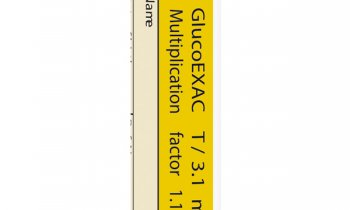The first pan-European VHD, CVD and diabetes guidelines
The first, pan-European guidelines to be published on the treatment of valvular heart disease (VHD), diabetes and cardiovascular diseases (CVD) have made a series of new recommendations that experts hope will contribute to improving the outcome for patients.
Published in February, in the European Society of Cardiology’s European Heart Journal in February, the guidelines for VHD highlight what should be happening according to the best available evidence from clinical trials. Professor Alec Vahanian, chair of the ESC VHD guidelines task force and head of the cardiology department of the Bichât Hospital, in Paris, said a unique feature of the guidelines is the integration of the current practice in Europe and emphasis on particular issues that were not adequately performed in current practice.
The guidelines on diabetes, pre-diabetes and CVD - also published recently in the EHJ - underline the fact physicians should check for both conditions if they see a patient with one of them. Professor Eberhard Standl, co-chair of the diabetes and CVD guidelines task force, chair of the Diabetes Research Institute in Munich and president-elect of the International Diabetes Federation of Europe, said the great merit of the guidelines is that they recognise that CVD and diabetes are ‘on the same coin; diabetes on one side, CVD on the other’.
One of the problems for the international experts collaborating to write the VHD guidelines was the lack of evidence on best practice. Prof Vahanian said: ‘Our guidelines are based on evidence that exists and the consensus of all the experts involved in each step of the writing process.’
The VHD guidelines deal with every aspect of treatment, from evaluation to surgery, other therapies and management during pregnancy. Prof Vahanian said one important recommendation concerned the use of stress testing, and recommended this should be used more often, to ensure patients who are not symptomatic receive the right treatment.
The need to use of echocardiography as the key technique to confirm a diagnosis of VHD is also emphasised. (Some countries provide better access to echocardiography facilities for patients, than other countries).
Although VHD occurs most frequently in the elderly, Prof Vahanian pointed out, the Euro Heart Survey showed many of them were not even considered for surgery, often for unjustified reasons. The guidelines stress the need for precise risk stratification before decisions are made about treatment for elderly patients.
A joint task force of the ESC and the European Association for the Study of Diabetes (EASD) wrote the diabetes, pre-diabetes and CVD guidelines. They believe there is still much to be done to improve treatment of these patients. Among the issues that they highlight is screening for undiagnosed diabetes.
Prof Standl said the team had ‘..not recommended mass screening for asymptomatic diabetes until there is evidence that the prognosis of such patients will improve by early detection and treatment. Indirect evidence suggests that screening might be beneficial, improving possibilities for the prevention of cardiovascular complications.’
Since many patients with CAD may have asymptomatic diabetes, or pre-diabetes, the guidelines recommend that patients should have an oral glucose tolerance test if their diabetic status is unknown. Additionally, every diabetic should be screened for CAD, so they can receive the right treatment.
08.03.2007











